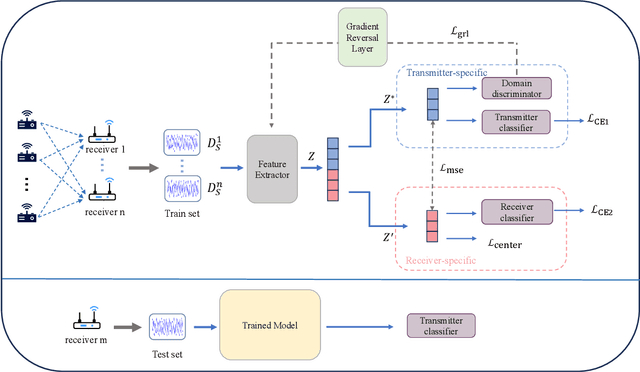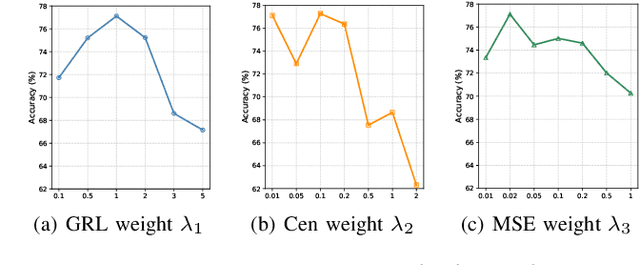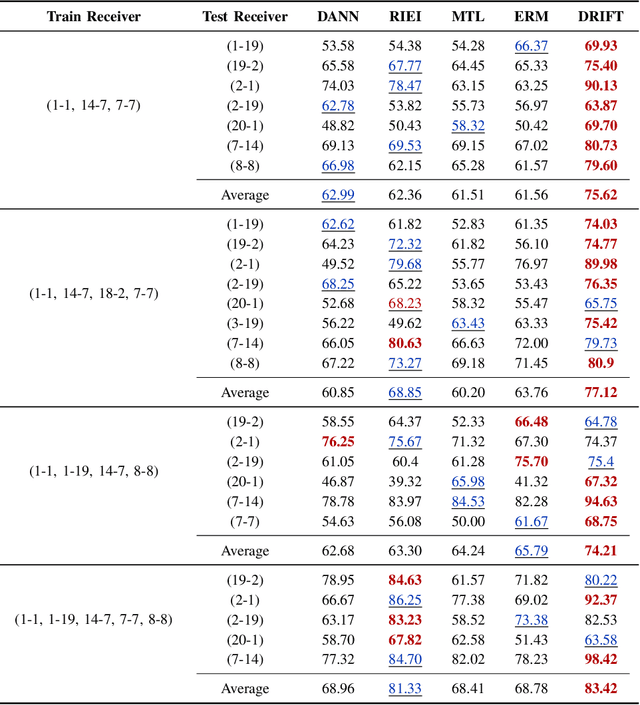Yuhao Pan
Cross-Receiver Generalization for RF Fingerprint Identification via Feature Disentanglement and Adversarial Training
Oct 10, 2025



Abstract:Radio frequency fingerprint identification (RFFI) is a critical technique for wireless network security, leveraging intrinsic hardware-level imperfections introduced during device manufacturing to enable precise transmitter identification. While deep neural networks have shown remarkable capability in extracting discriminative features, their real-world deployment is hindered by receiver-induced variability. In practice, RF fingerprint signals comprise transmitter-specific features as well as channel distortions and receiver-induced biases. Although channel equalization can mitigate channel noise, receiver-induced feature shifts remain largely unaddressed, causing the RFFI models to overfit to receiver-specific patterns. This limitation is particularly problematic when training and evaluation share the same receiver, as replacing the receiver in deployment can cause substantial performance degradation. To tackle this challenge, we propose an RFFI framework robust to cross-receiver variability, integrating adversarial training and style transfer to explicitly disentangle transmitter and receiver features. By enforcing domain-invariant representation learning, our method isolates genuine hardware signatures from receiver artifacts, ensuring robustness against receiver changes. Extensive experiments on multi-receiver datasets demonstrate that our approach consistently outperforms state-of-the-art baselines, achieving up to a 10% improvement in average accuracy across diverse receiver settings.
Trapezoidal Gradient Descent for Effective Reinforcement Learning in Spiking Networks
Jun 19, 2024Abstract:With the rapid development of artificial intelligence technology, the field of reinforcement learning has continuously achieved breakthroughs in both theory and practice. However, traditional reinforcement learning algorithms often entail high energy consumption during interactions with the environment. Spiking Neural Network (SNN), with their low energy consumption characteristics and performance comparable to deep neural networks, have garnered widespread attention. To reduce the energy consumption of practical applications of reinforcement learning, researchers have successively proposed the Pop-SAN and MDC-SAN algorithms. Nonetheless, these algorithms use rectangular functions to approximate the spike network during the training process, resulting in low sensitivity, thus indicating room for improvement in the training effectiveness of SNN. Based on this, we propose a trapezoidal approximation gradient method to replace the spike network, which not only preserves the original stable learning state but also enhances the model's adaptability and response sensitivity under various signal dynamics. Simulation results show that the improved algorithm, using the trapezoidal approximation gradient to replace the spike network, achieves better convergence speed and performance compared to the original algorithm and demonstrates good training stability.
 Add to Chrome
Add to Chrome Add to Firefox
Add to Firefox Add to Edge
Add to Edge